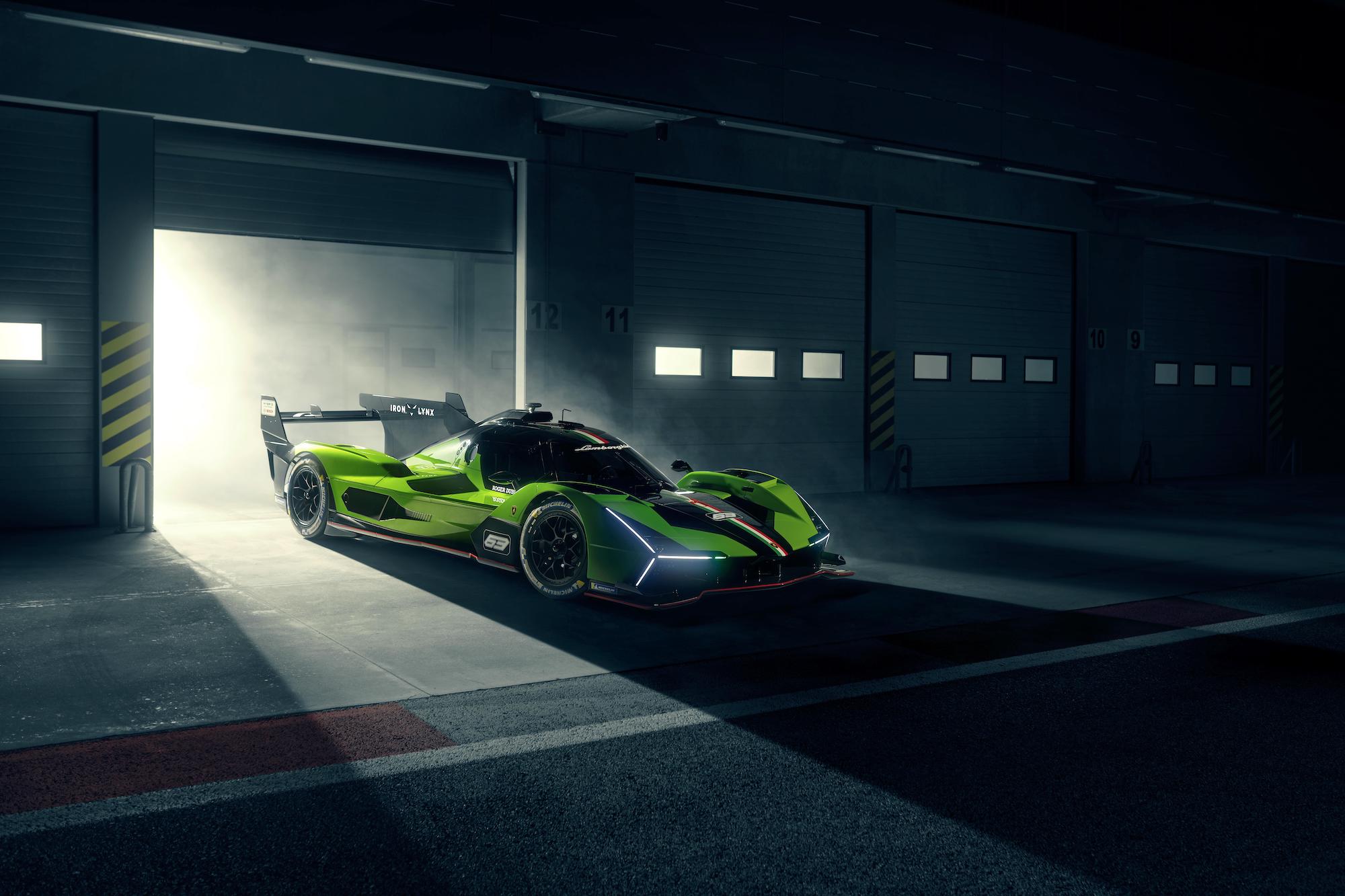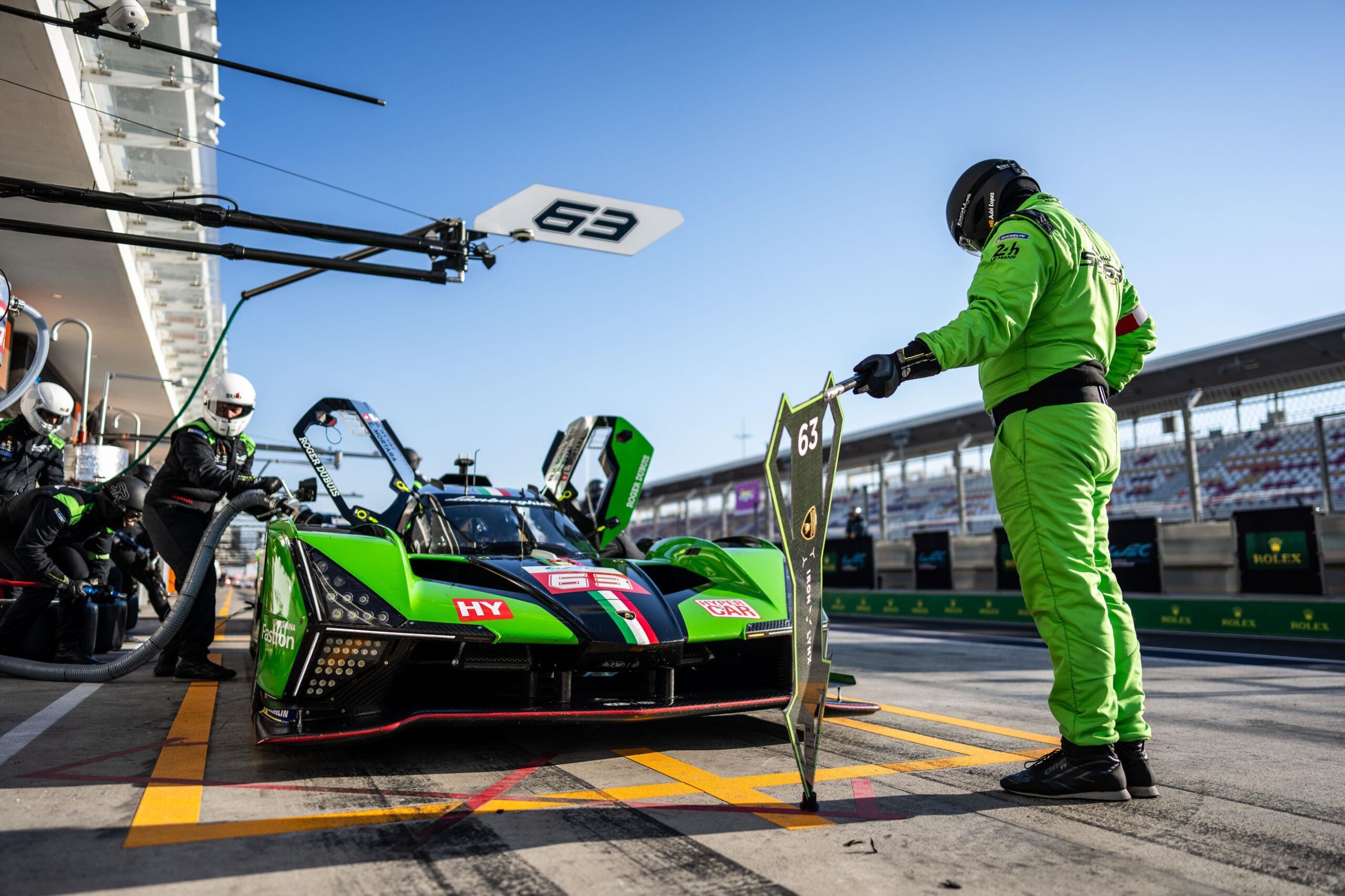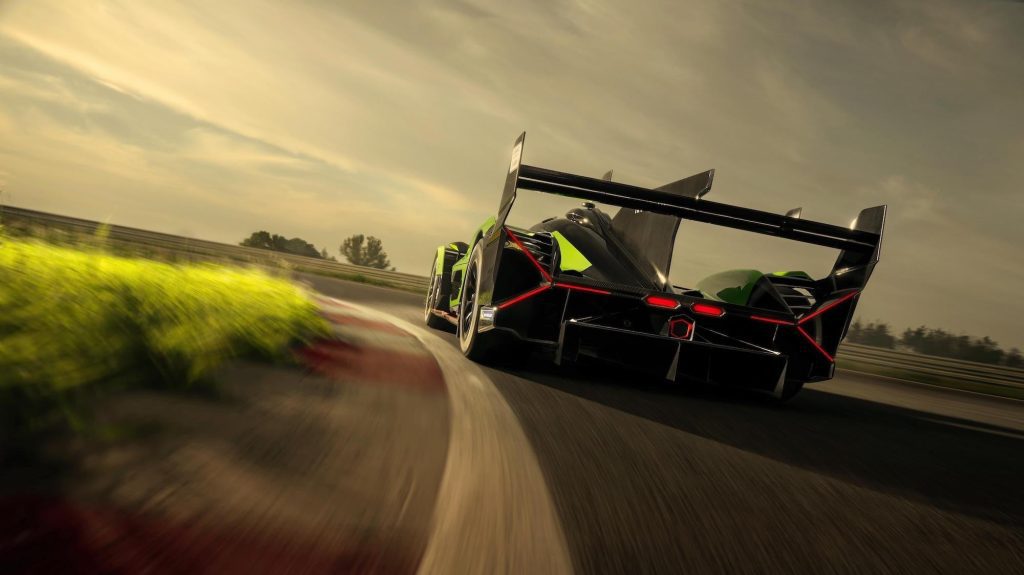Just last year, the Italian supercar maker Lamborghini introduced its first plug-in hybrid. The Reveulto’s system combines a new V12 gas-powered engine and three electric motors, resulting in a powerful 1,001 horsepower and over 800 pound-feet of torque, earning the title of “most powerful plug-in hybrid available on the market.”
Now, the company is bringing its hybrid experience to motorsport with the SC63 hypercar, an electrified race car that combines the power of a 3.8-liter twin-turbo V8 with a 50-kilowatt Bosch electric motor. While Lamborghini has a successful history in the motorsport circuit, with 15 years of success with its Huracan GT3 race car, 2024 marks its first entry into the FIA World Endurance Championship and International Motor Sports Association prototype categories.
Historically, founder Ferruccio Lamborghini believed that racing was a waste of time and money; he thought he didn’t need motorsports to prove his cars’ worth. However, Lamborghini CEO Stephan Winkelmann told Car and Driver.
“The trends are changing, and there is a technical reason too,” Winklemann said. “We’re in the midst of transition from ICE to plug-in hybrid. Endurance racing gives us a chance to test materials.”
In addition, he mentioned that seeing electrified systems in motorsports helps customers who are used to V8 and V12 engines to accept electrified production cars.

A “cold V” and eight radiators
Following the recent completion of the 12 Hours of Sebring Race, the Raging Bull has achieved a major milestone in its inaugural year of prototype racing. Aerodynamically focused and sleek, the SC63 showcases its Lamborghini heritage although it differs from its road-going cars. To comply with racing regulations, the car had to meet certain size requirements, but chief designer Mitja Borkert integrated the brand’s unique Y-shaped taillights and an inlet inspired by the air intake of the legendary Countach model.
The V8 was specifically developed for racing by the Raging Bull with a “cold V” configuration, meaning the turbos are mounted outside of the V shape of the block as opposed to inside, which is typical of a “hot V” setup. This arrangement makes it easier for mechanics to access the turbos for servicing and offers the additional benefit of improved cooling. By placing the turbos on the outside of the engine, the car has a lower mass and maximizes its center of gravity. Ultimately, this results in optimal balance and consistent speed on the track in both short and long term.
Managing heat is crucial during the race, and the prototype features eight different radiators, including two intercoolers that cool compressed air from the turbocharger before it enters the engine, as well as radiators for the gearbox, the energy recovery system, energy storage system, and others. Overall, the car was designed to be as thermally efficient as possible to handle the worst-case heat scenarios (especially in hot, humid Florida)
The drivers also had input. Romain Grosjean, a Lamborghini prototype driver with experience in Formula 1, gave advice to the engineers on how to improve the LMDh system and the design of the steering wheel controls.
More work is required, but the progress looks promising.

The SC63 didn’t win the race, but winning was not the main goal for the supercar brand. The Lamborghini race car finished in seventh place, providing valuable data and experience that the brand will use for future races and production cars.
“The [race car] is still very advanced and sophisticated,” said Chief Technology Officer Rouven Mohr to Car and Driver. Car and Driver. “But the newer damper technology, which is found in high-performance cars today, was actually seen in race cars years ago. The multi-way adjustability and friction optimization are examples of what was learned from race cars to minimize friction in the suspension. This knowledge can be applied to street cars, even if the suspension itself is not directly transferred.
Grosjean expressed satisfaction with the result, considering the challenging nature of the Sebring 12 Hours due to the rough track surface. “It is a positive achievement that we completed the race and finished in P7 on the lead lap,” said Grosjean. “However, there is still much to improve, and I am looking forward to the future.
Mohr shares his excitement and believes that the brand can utilize the lessons from Sebring to make improvements.
“I am pleased with the #63's performance. Finishing in seventh place and on the same lap as the race winner is a remarkable accomplishment,” Mohr said. “Although there are areas for improvement, we recognize the need to narrow the gap with the leaders, which is currently quite significant.









